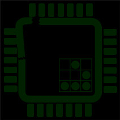Good new, the long awaited UEFI-based boot support for Azure virtual machine is now available in preview. The UEFI-based boot support was added to on-premises Hyper-V since Windows Server 2012 R2, quite long time ago and since then we have been waiting for this on Azure. The new generation (aka generation 2) of Azure virtual machine introduces this support alongside of: […] and off course, support of SecureBoot and vTPM (virtual trusted platform module). Unfortunately, the support for VHDX is still not there. […] Complete list of support and limitations is available here https://docs.microsoft.com/en-us/azure/virtual-machines/windows/generation-2 (side note, it seems the documentation is not completely correct at the time of writing as SecureBoot and vTPM are still listed as unsupported).[…]
https://docs.microsoft.com/en-us/azure/virtual-machines/windows/generation-2

You must be logged in to post a comment.